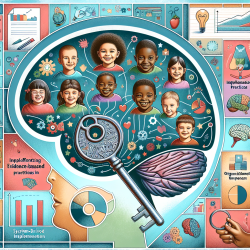Introduction
As practitioners dedicated to improving the lives of children, understanding the nuanced interplay between childhood adversity and resilience, especially among autistic individuals, is crucial. The research article titled “Realizing the problem wasn’t necessarily me”: the meaning of childhood adversity and resilience in the lives of autistic adults provides valuable insights that can inform our therapeutic approaches. This study sheds light on how adversity impacts autistic individuals and how resilience can serve as a protective factor.
Understanding the Impact of Adversity
Adverse childhood experiences, such as bullying, abuse, and social ostracization, can have profound effects on mental health and development. For autistic children, these experiences often lead to social disconnection, emotional distress, and a negative self-concept. The study highlights that adversity influences not only mental health but also social interactions and self-perception, which can persist into adulthood.
The Role of Resilience
Resilience, defined as the ability to adapt well and bounce back from adversity, plays a critical role in mitigating these negative effects. The study identifies internal and external factors that contribute to resilience in autistic individuals, such as supportive relationships, personal strengths, and safe spaces. These factors help create a sense of belonging and identity, which are crucial for developing resilience.
Implementing Research Findings in Practice
Practitioners can leverage these findings to enhance therapeutic outcomes by:
- Identifying and nurturing resilience factors in autistic children, such as personal interests and supportive relationships.
- Creating safe and inclusive environments that foster a sense of belonging and acceptance.
- Developing personalized interventions that address both the emotional and social needs of autistic children.
By focusing on these areas, practitioners can help autistic children build resilience, which in turn can lead to improved mental health and social outcomes.
Encouraging Further Research
While this study provides valuable insights, it also highlights the need for further research to explore the unique resilience factors in autistic children. Practitioners are encouraged to contribute to this body of knowledge by conducting their own research and sharing their findings with the broader community.
Conclusion
Understanding the dynamics of adversity and resilience in autistic children is essential for creating effective therapeutic interventions. By fostering resilience, practitioners can help mitigate the negative effects of adversity, leading to better outcomes for autistic individuals. To read the original research paper, please follow this link: “Realizing the problem wasn’t necessarily me”: the meaning of childhood adversity and resilience in the lives of autistic adults.










